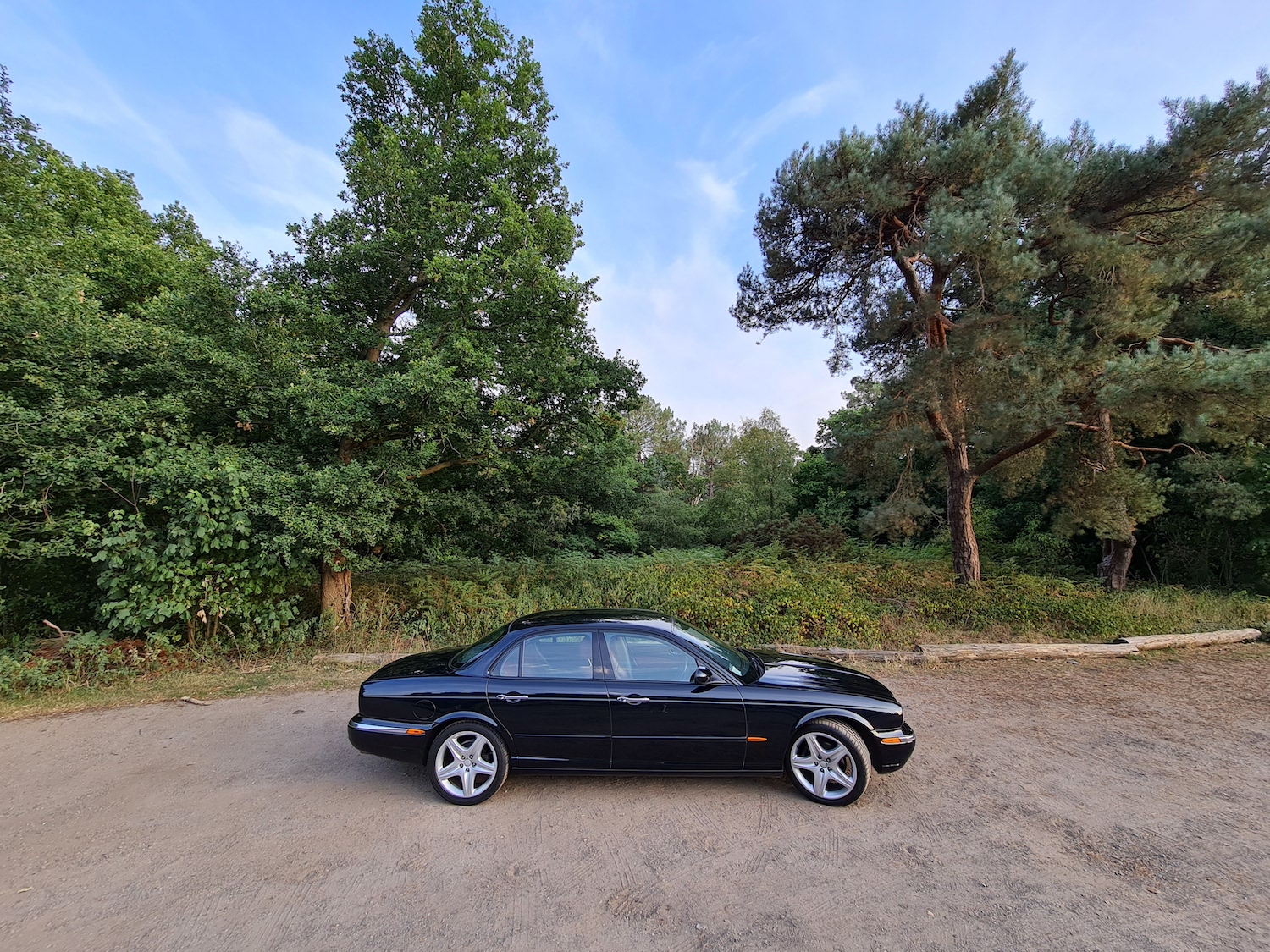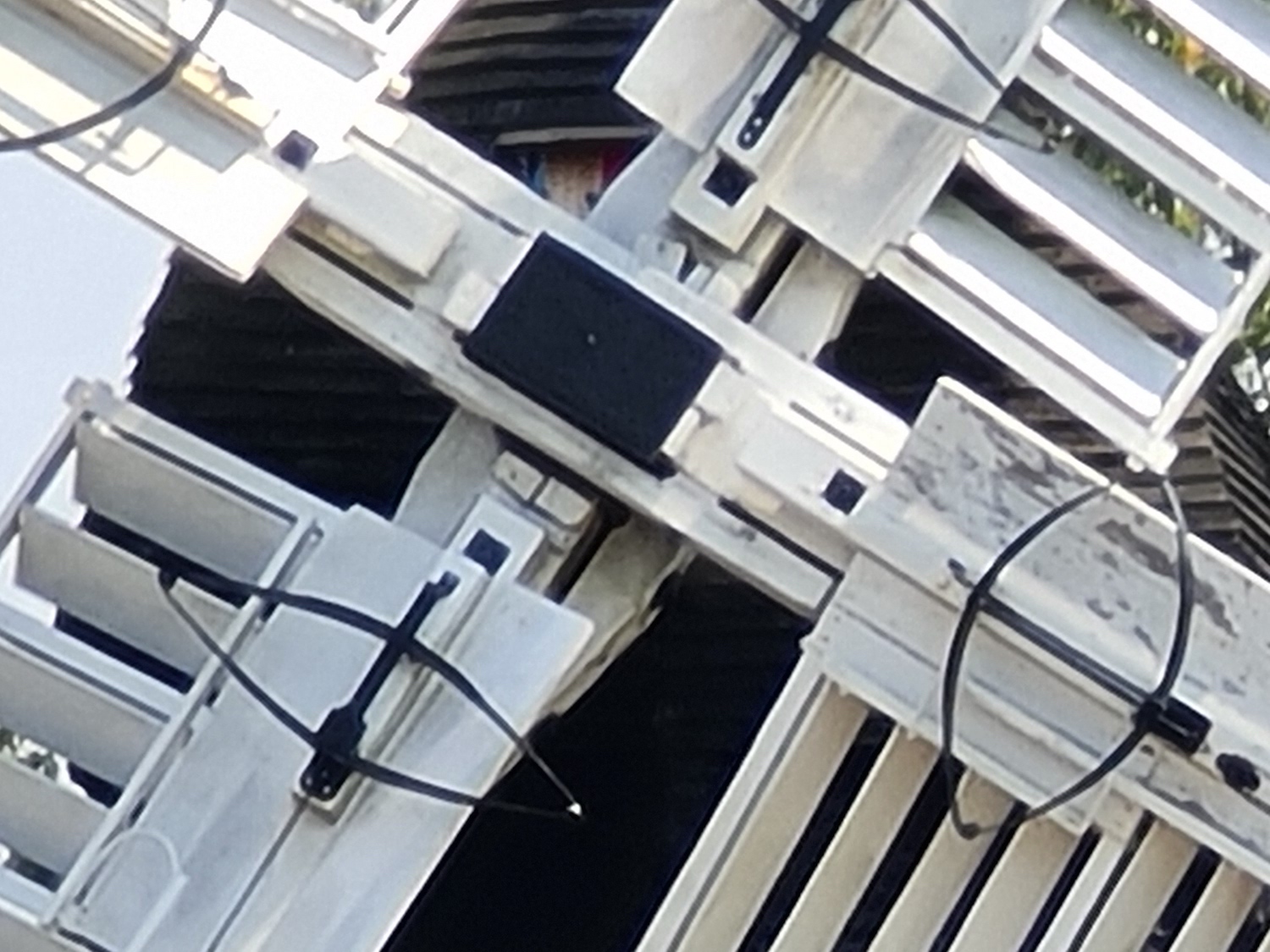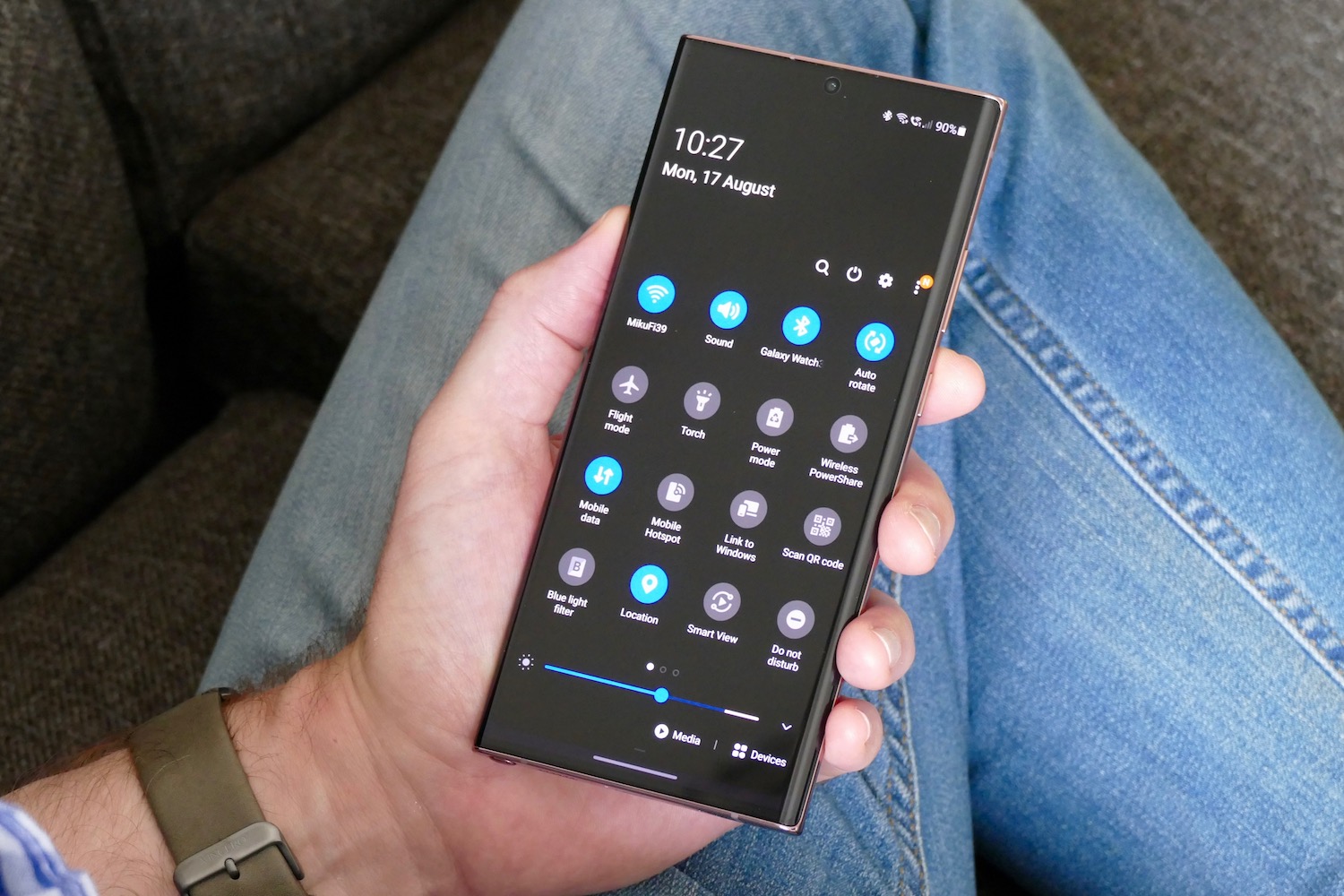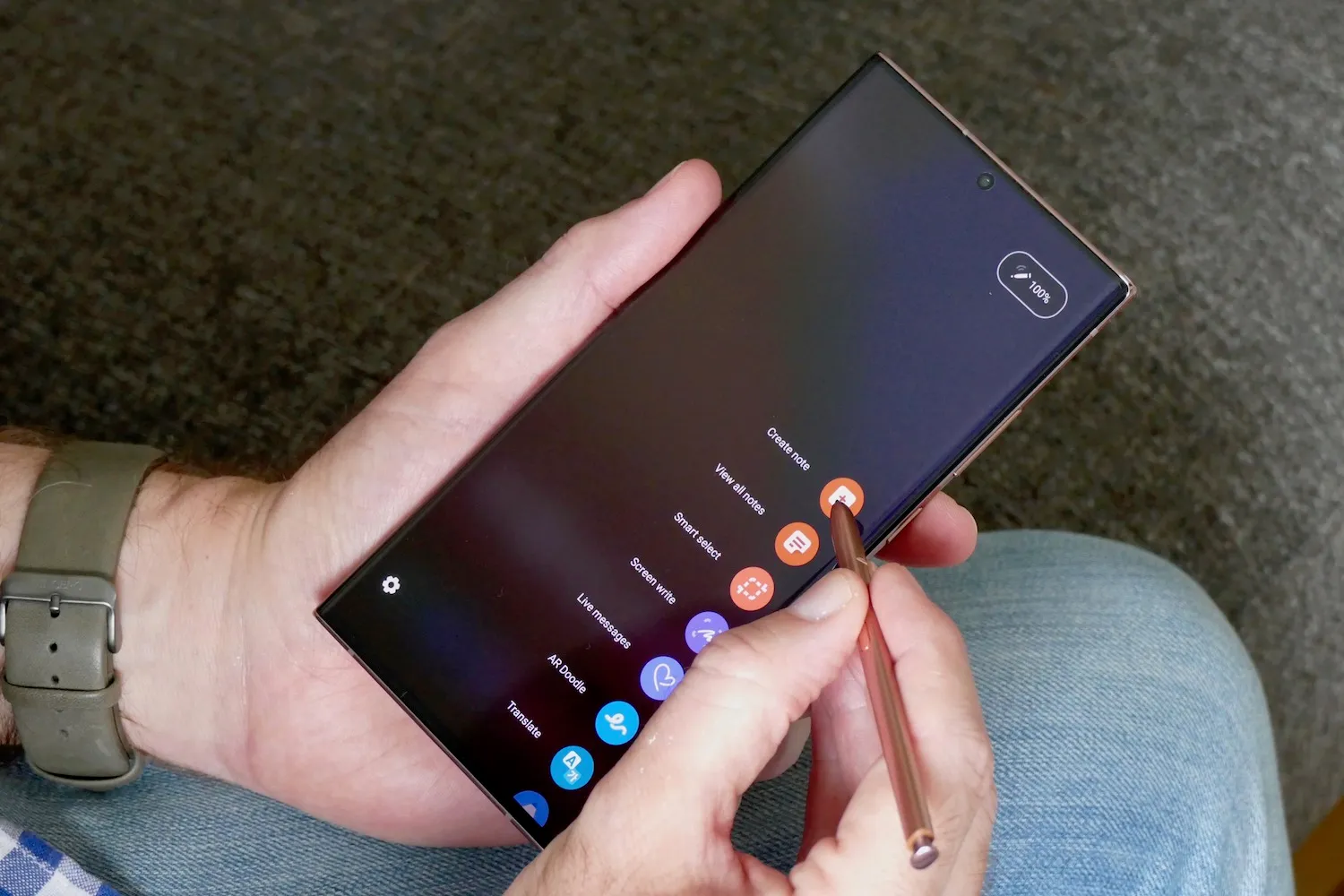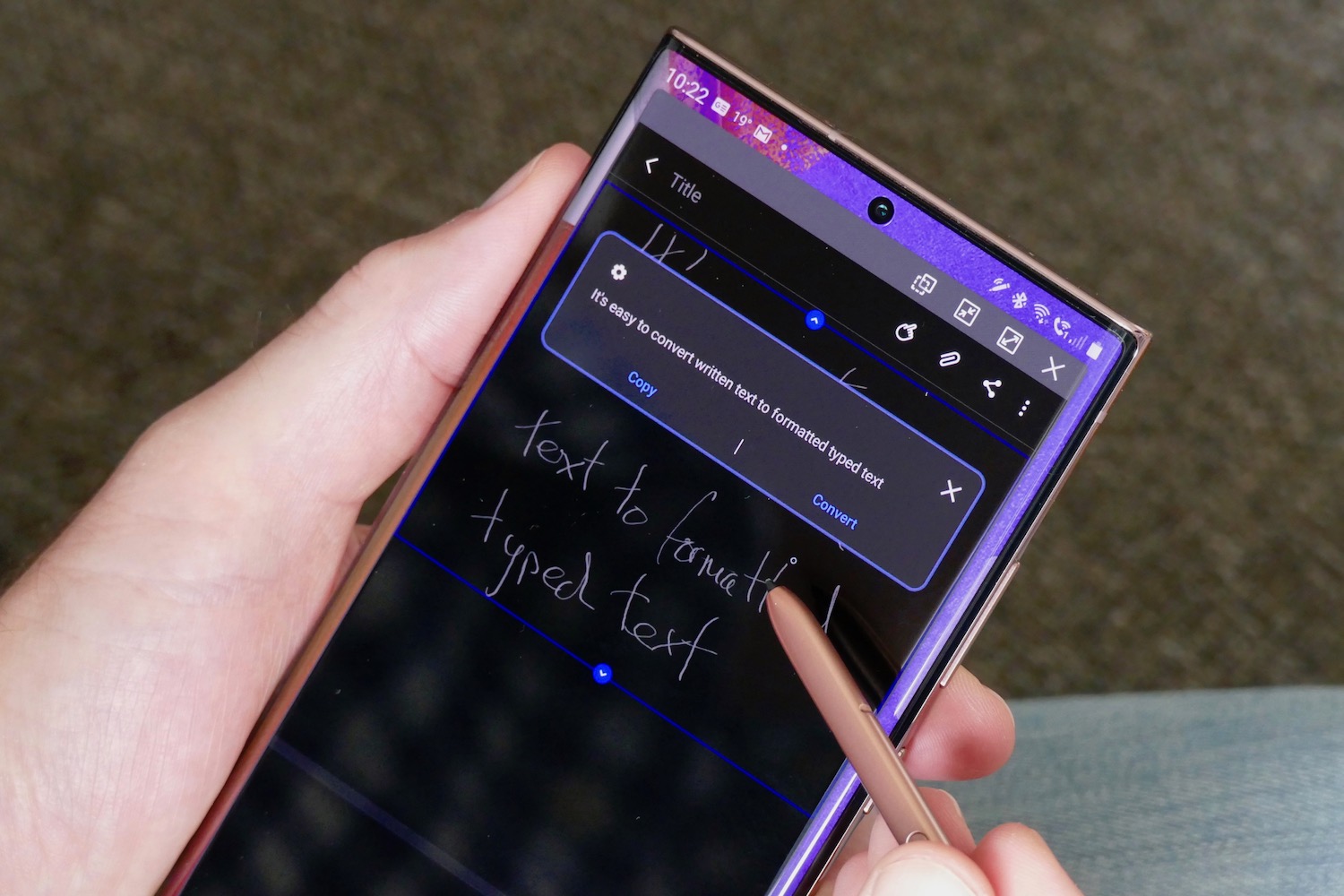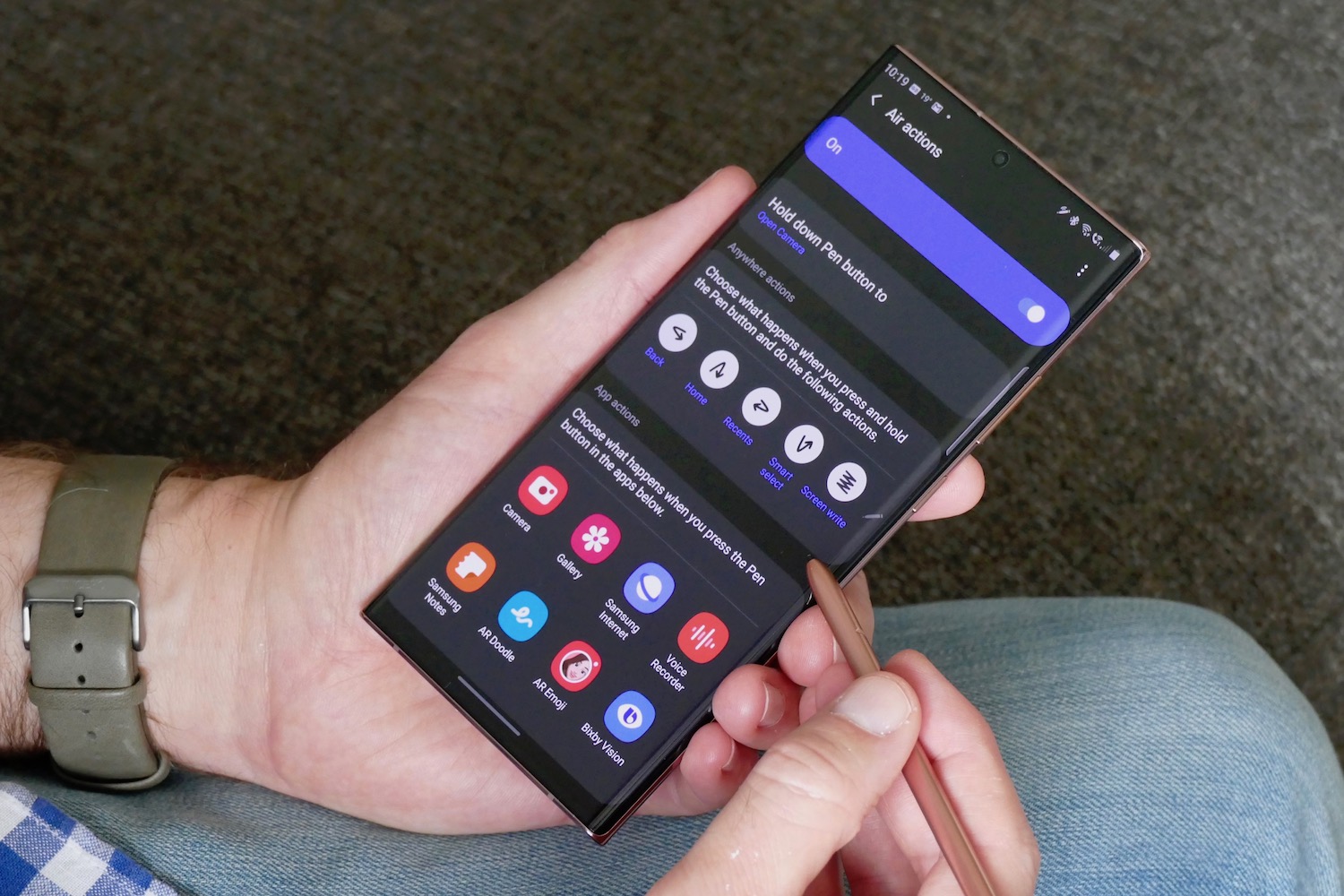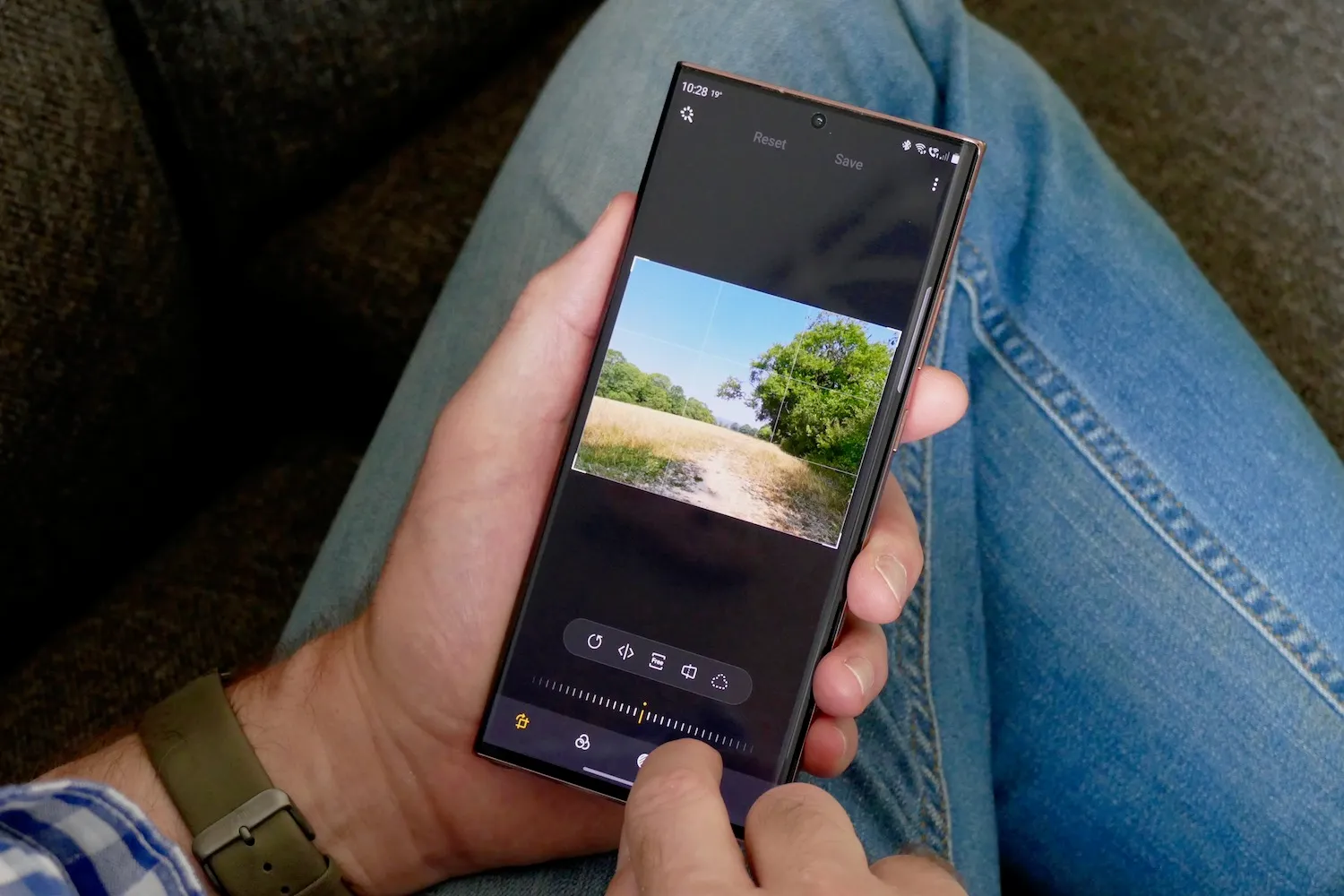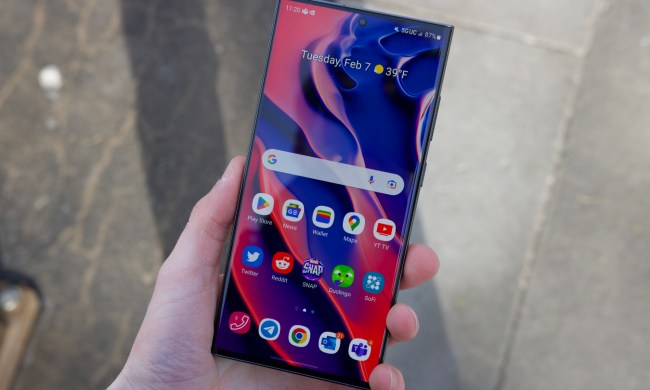- Massive 120Hz screen looks great
- S Pen is unique and handy
- Versatile camera
- Future-proofed hardware and software
- Full-day battery even with heavy use
- Big and heavy
- Security features are finicky
Go big or go home. That’s always been Samsung’s motto with the Galaxy Note series, and the Galaxy Note 20 Ultra is its biggest effort yet. The screen is even larger than last year’s Galaxy Note 10 Plus, and there’s also more power, more features, and more technology — all aimed at improving productivity and increasing its media capabilities.
Your wallet had better be bigger too, as the Galaxy Note 20 Ultra starts at $1,299. Samsung’s approach to outdoing the competition is simple: Beat them into submission by offering everything a phone buyer could possibly want, in a phone that will last for years.
Pushing the boundaries of what’s acceptable in terms of device size and price, the Galaxy Note 20 Ultra claims the top Android option among the best smartphones this year, even outdoing the Galaxy Note 10 Plus — a phone we called the best Android phone of 2019.
Updated on September 23, 2020: After several software updates following release, I used the Galaxy Note 20 Ultra for another week. Palm rejection and edge recognition are significantly improved, to the point where remaining issues are barely noticeable. Our score has changed from eight to nine, and it’s now eligible for our Editor’s Choice award.
Design
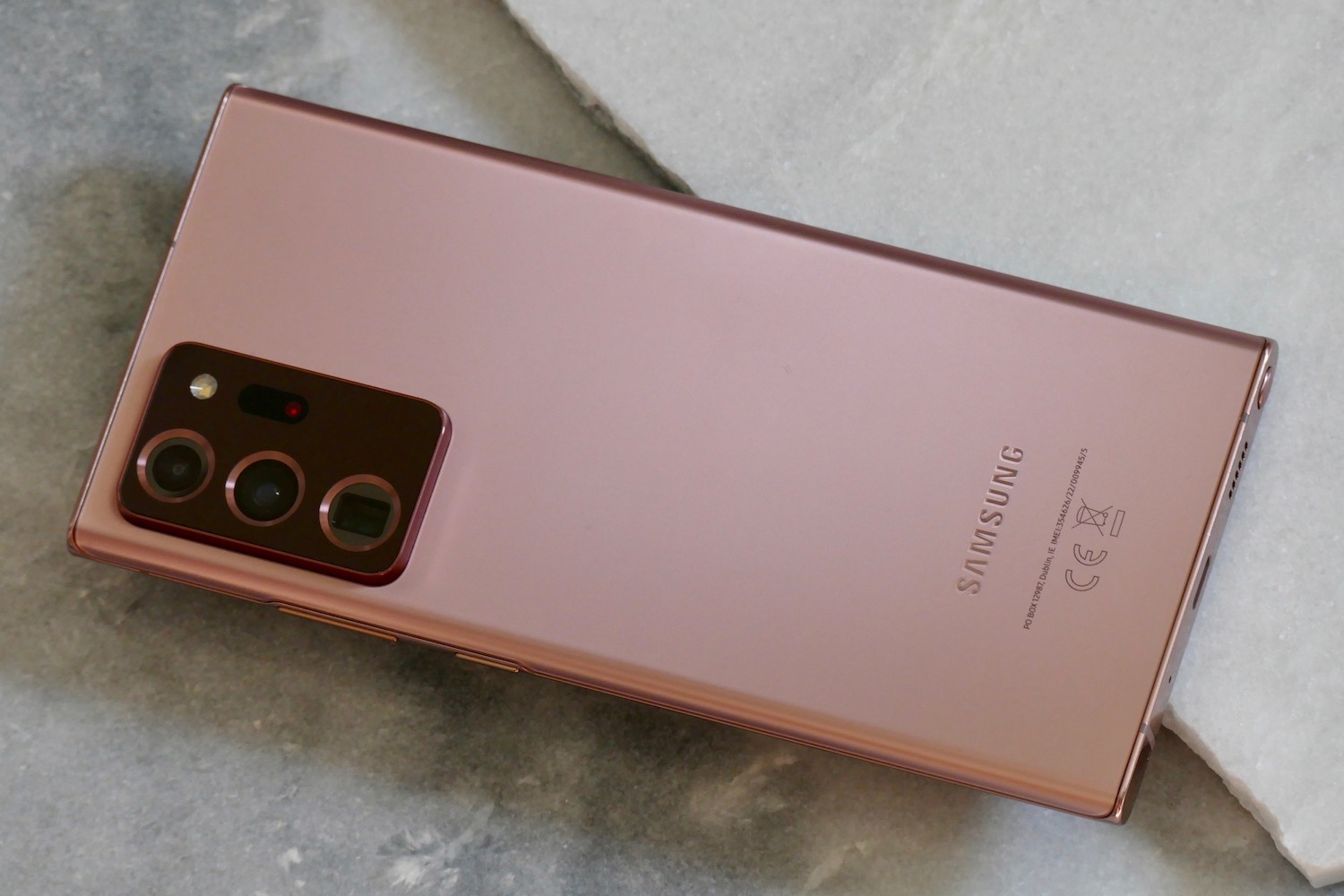
If the design of the Galaxy Note 10 Plus was a little ordinary, the Note 20 Ultra is anything but. That’s especially evident in the new Mystic Bronze color of the devices in the photos. The camera module is massive, protrudes by several millimeters, and dominates the back of the phone. It’s very different from the dainty module on the Note 10 Plus, and even more in your face than the Galaxy S20 Ultra’s module. The glass covering has a strong, bright sheen in different lighting conditions.
The Mystic Bronze itself falls somewhere between gold and pink, and is classy rather than gaudy. The matte finish has plenty of grip and resists fingerprints, but the glass over the camera module doesn’t, and it often needed a good wipe before taking photos. Take away the monster camera module and the Note 20 Ultra shares the same basic shape as the Note 10 Plus, where the curved sides taper down to a point while remaining perfectly comfortable to grip.
Samsung has swapped the buttons over to the right-hand side of the phone and, for me, as a right-handed person, it’s far more natural than the Note 10 Plus, where the buttons were on the left. In the new layout, the S Pen stylus is stored on the left side of the phone, the top and bottom of the phone are flat, and there’s a single hole-punch selfie camera in the screen.

I have average-sized hands, and the Note 20 Ultra is right on the edge of being too big and too heavy at 77.2mm (3.04 inches) wide, 8.1mm (0.32 inches) thick, and 208 grams (0.46 pounds). It is well-balanced but can feel top-heavy when you’re using it while laying down. It’s also frustrating to juggle it with one hand when you just want to check a notification or take a selfie.
It’s these quick tasks that can make using the massive Note 20 Ultra a bit of a chore, and sometimes I’d long for a smaller, more manageable device. I felt this less with the 196-gram, 7.9mm-thick Note 10 Plus.
Be prepared for a period of adjustment as you get used to the size.
The Note 20 Ultra is a whopper of a phone and requires commitment to carry and use every day. The reward is worth the effort, but if you’re graduating from a smaller phone (which is just about every other phone available), be prepared for a period of adjustment as you get used to it.
This applies even if you’re coming from the Note 10 Plus, which feels surprisingly lithe and usable compared with the Note 20 Ultra. I always appreciate an extra-large screen, but the massive chassis required to accommodate it can feel like a step too far.
Screen and audio

A 6.9-inch Dynamic AMOLED screen with a 1,440 x 3,088 pixel resolution, a variable 120Hz refresh rate, and even HDR10+ support catches your attention. The Note 20 Ultra is the first Samsung phone to use Samsung Display’s variable refresh rate technology, which adapts depending on what you’re doing on your phone. For example, it’ll use 120Hz when playing games that support it, or switch to 60Hz for movies, or even 10Hz for still photos. The aim is to be more power efficient.
The screen is lovely to look at, just like the majority of Samsung phones.
This adaptive refresh rate is set as standard, but it’s possible to force it to permanently use a 60Hz refresh rate. Similarly, the resolution by default is 2,316 x 1,080, and it must be manually changed to 3,088 x 1,440 — to enjoy this, however, you have to use a 60Hz refresh rate. It’s lovely to look at, just like the majority of Samsung phones. I used it in the default setting most of the time and had no complaints about the quality or sharpness.
Scrolling through some apps is not as smooth as I’d expected. I experienced some jerkiness in Twitter and in parts of Chrome too, which may have more to do with Android than the screen. There are minimal bezels at the top and the bottom of the display, and it gently curves down the sides to give a large viewing area. Even the hole-punch for the selfie camera is tiny.
Watching Woyshnis Media’s YouTube video featuring the Lamborghini Huracán Perfomante and Mercedes Benz AMG GTS is a great demonstration of how fantastic the screen is, and also how a display tweak called the Video Enhancer works. The green Lamborghini pops off the screen with the mode active, while the darker AMG remains subdued until you get close, and the colorful flake in the paint becomes noticeable. This neat balance isn’t common in display-enhancing modes, and meant I didn’t mind leaving the Video Enhancer on most of the time.
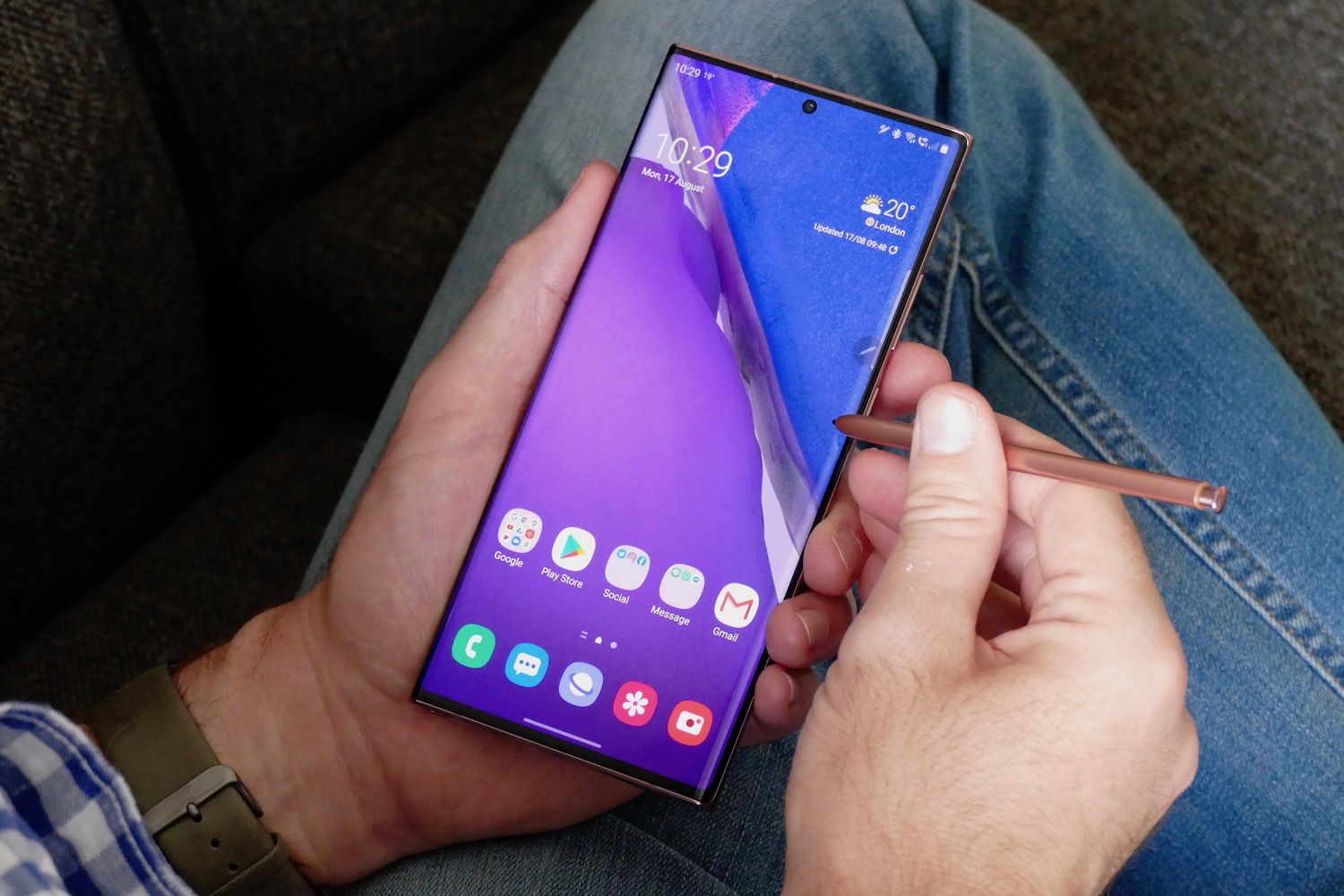
I put the Galaxy Note 20 Ultra alongside the equally stunning Sony Xperia 1 II to test video, and the results are surprising. The Note 20 Ultra doesn’t play 4K YouTube video like the Sony phone, but watching Carfection’s Porsche Taycan review, it hardly shows. The Note 20 Ultra’s screen is vibrant with color, yet still delivers crisp whites, and the large size really does return a beautiful viewing experience.
There are stereo speakers on the Galaxy Note 20 Ultra, one set at the top of the screen for calls, and another on the bottom of the phone. The sound is full, with plenty of midrange and clear highs. As you’d expect, there’s little low-end bass. It’s loud though, and while the sound gets pretty bright, there’s no distortion at maximum volume. The Note 20 Ultra also has Dolby Atmos support.
The screen and media experience on the Galaxy Note 20 Ultra is superb, but was marred during my early experience using pre-release software by problematic palm and finger rejection at the edges of the screen. I returned to the Galaxy Note 20 Ultra several weeks, and several software updates, after its release to find the vast majority of these problems had been cured. It’s not absolutely perfect — buttons right at the edge of the screen can still not always recognize your taps — but for the most part, the problem has entirely gone away.
Camera

The camera is one of the major upgrades the Note 20 Ultra boasts over the Note 10 Plus. Samsung’s 108-megapixel 1/1.33-inch sensor is on board, taken from the Galaxy S20 Ultra. It’s joined by a 12-megapixel periscope zoom with 5x optical and 10x hybrid zoom, but with its maximum Space Zoom level reduced to 50x instead of 100x.
Finally, there’s a 12-megapixel ultrawide camera, a new laser autofocus system, and optical image stabilization on the main and periscope lenses. It can also record video at up to 8K resolution at 24 frames per second and 4K at 60fps, with both optical and electronic stabilization, plus HDR10+ support.
Although the specs are clearly an improvement over the Note 10 Plus, the two main cameras take very similar photos, with only a little more detail coming from the Note 20 Ultra. This changes when you go to 5x and 10x zoom though, where the Note 20 Ultra surpasses the Note 10 Plus’ ability to take clear, detailed photos.
The Note 10 Plus has a better 2x optical zoom mode though, which in some cases may make it more usable, as 5x gets you in very close to a subject indeed.
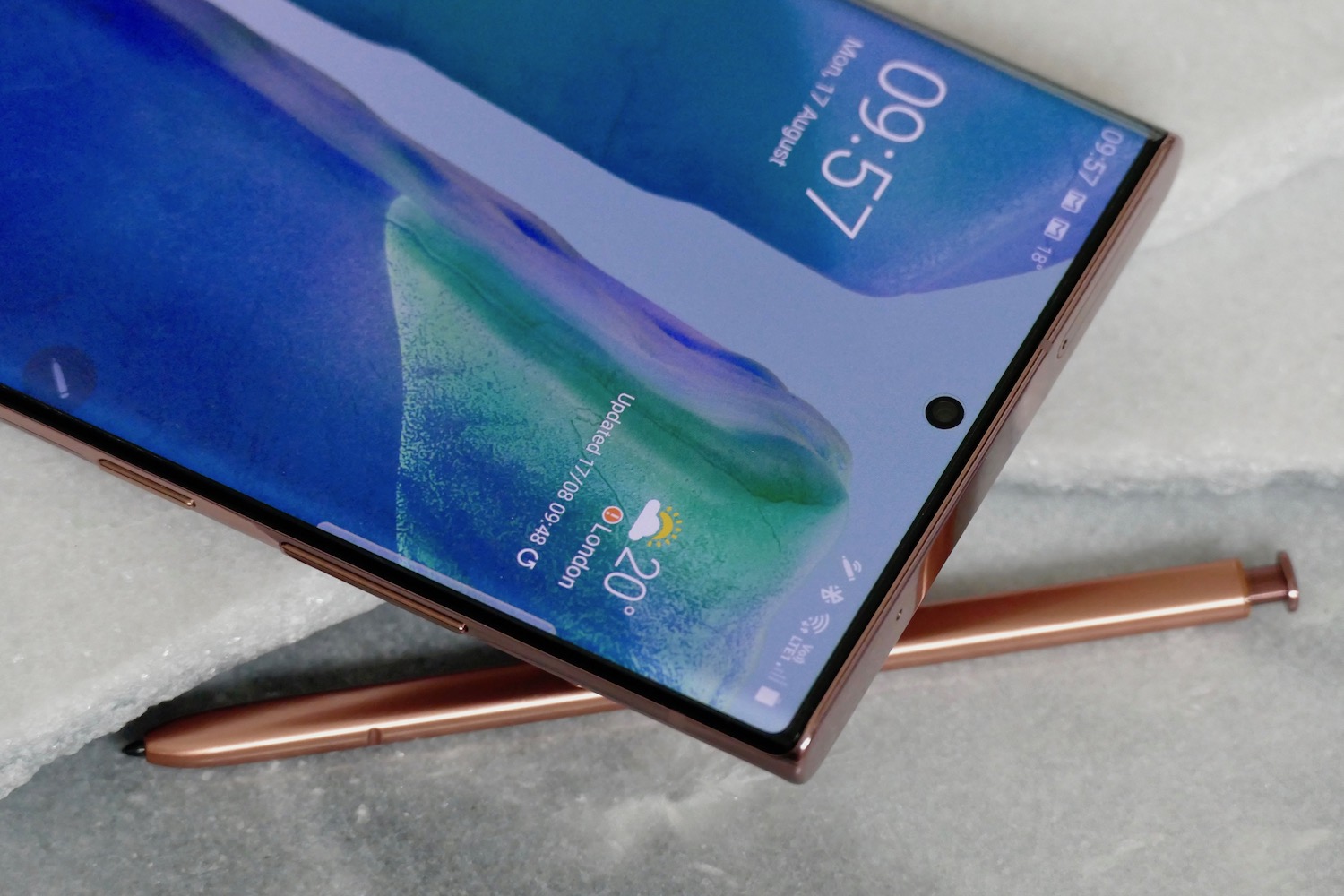
It’s easy to love the Note 20 Ultra’s camera. The photos it takes are full of color, popping off the screen in a pleasing way without appearing too artificial or oversaturated. At nighttime, the low-light performance is great too, with the camera injecting real atmosphere after dusk. Zoom in to 5x and 10x and shots still have a lot of detail, but 50x is the same pointless endeavor as 100x on the Galaxy S20 Ultra.
The phone includes the excellent Single Take mode with some subtle changes. With this mode, you shoot a short video instead of a single still, and the camera creates multiple different edits including stills, filtered shots, GIFs, and more for you. You’ll never regret taking a photo rather than a video.
In the new mode, you can select the amount of time you shoot a video for — between five and 15 second –, and it returns more options from even the most basic captures than it did before. Not all are gold, but I’d rather have too much choice than not enough.
The 108-megapixel mode and the 8K video mode are gimmicks. The 8K video looks great if you own an 8K TV, but if you don’t, the footage just takes up masses of storage space on your phone.
Take a 108-megapixel still and you’ll struggle to pick it out in the gallery. Once you find it, you can crop it down without losing much detail, but this is a niche feature, especially since you could also use one of the Note 20 Ultra’s very capable zoom settings. These modes work as intended, and 8K video may be more helpful in the future, but right now they’re not a reason to buy this phone.
How about selfies? Some may consider them washed out — and compared to the iPhone 11 Pro, they’re definitely on the light side — but I liked the results.
The editing suite inside the Gallery app is also worth mentioning, as it’s full-featured and very easy to use, and the auto-enhance setting is usually suitably effective in emphasizing the colors in selfies. Samsung has added a pro mode to the video, and while I like the way you can zoom in and out manually for a cinematic look, pro modes are complicated and require a degree of expert knowledge. Most people will just use the auto mode, I suspect, but if you’re a competent photographer, it will be very welcome.
The core features of the Galaxy Note 20 Ultra’s camera — the main sensor, periscope zoom, wide-angle, Night mode, and selfies — are all excellent, and you’ll take photos that are instantly ready to share in just about any environment or situation. Explore more, and the Note 20 Ultra’s camera really stands out.
S Pen
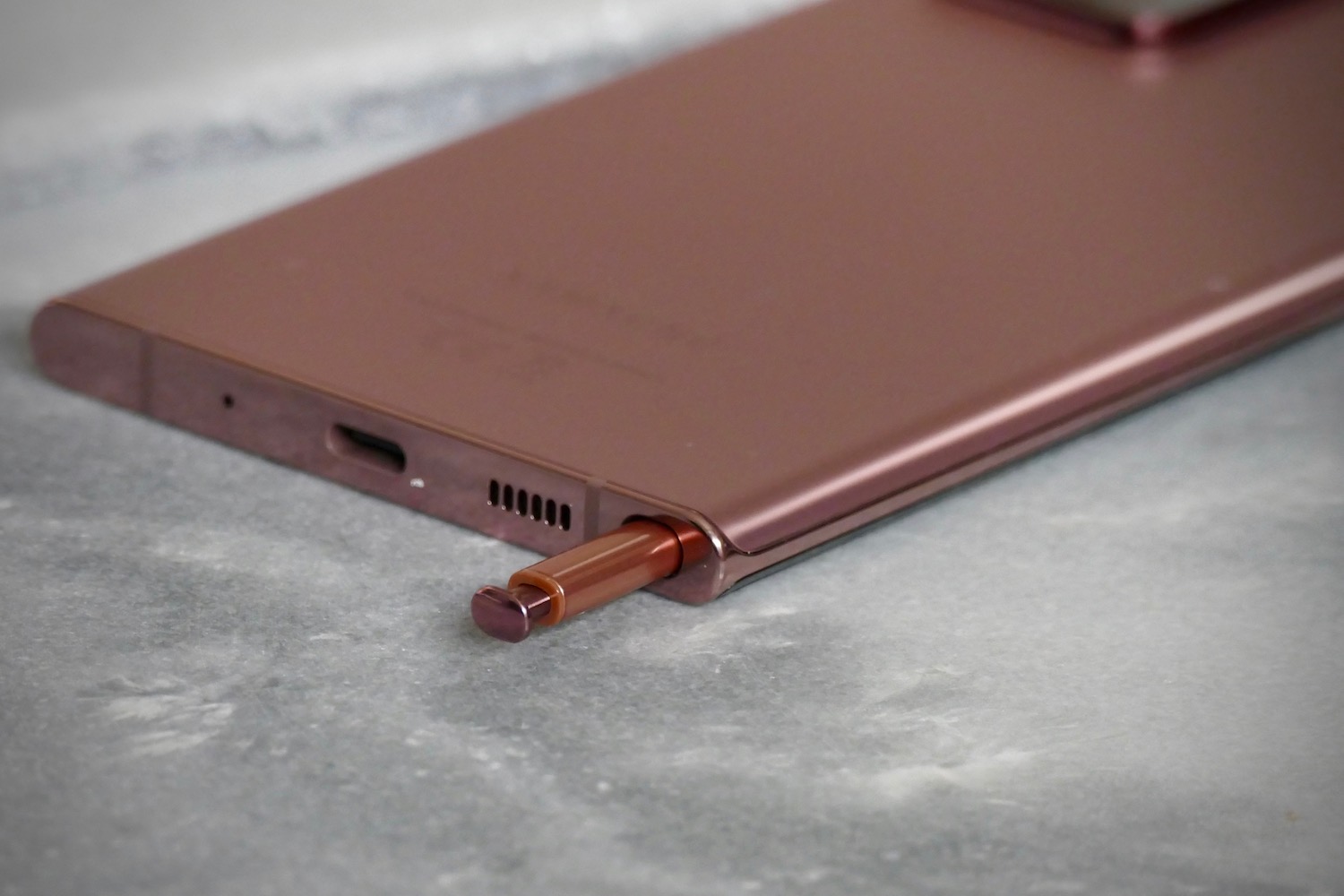
Now housed on the lower left of the phone, the S Pen is identical in size and shape to the last one, but it’s easier to remove and replace than on the Note 10 Plus. Samsung made a big thing about the latency reduction to 9 milliseconds, so is this noticeable? Not really, no, and perhaps it’s because I’m used to the Note 10 Plus, but I found my scribbled notes were much neater on that phone. I think the sensitivity needs some adjustment, and the palm rejection problems don’t help matters here either.
The new convert-to-text feature is very accurate. An easily edited box appears on screen when you convert, and while I never had to change any words, the formatting was always off and needed neatening up. The S Pen’s Air Gestures work well. For example, a reverse swipe goes back a step, and a scribble action opens a window to write on the screen. The button still works as a remote shutter key for the camera too.
Yes, the S Pen is a reason to buy the Galaxy Note 20 Ultra — if for no other reason than if you want a stylus, you don’t have a lot of other choices.
Living with the Note 10 Plus on various occasions over the past year taught me it can be useful, but you’ve got to really have a use for it in mind. While there are special features, they aren’t compelling enough to make you want to use it if you’re not already planning to take notes or draw.

Despite the size and weight of the phone, it’s a great gaming machine, mostly because the screen is so large and the S Pen is an interesting alternative to using your finger. I played DariusBurst SP, one of my favorite mobile games, and I was far more precise when dodging bullets in the more difficult later levels using the S Pen rather than my finger. It worked equally well playing 1945 and other shooters. The S Pen’s new low latency almost certainly helps, although I wouldn’t say Scribble Racer 2 felt any more precise than before.
Software updates after release have really improved the S Pen. It’s considerably more accurate when writing on screen, mostly due to the vastly improved palm rejection system. I can lean my palm on the screen and still write very neatly using the S Pen, something that really wasn’t possible using the pre-release software.
Performance and software
Buy the Galaxy Note 20 Ultra in the U.S. and it comes with a Qualcomm Snapdragon 865 Plus processor, but buy the same phone in the U.K. or elsewhere in Europe and it’ll come with Samsung’s own Exynos 990 processor. This is the model tested here, with 12GB of RAM and 256GB of storage space. There is a MicroSD card slot to boost this if you need more space. Regardless of where you buy the phone, it comes with 5G connectivity. Here are the benchmark results:
Geekbench 5: 919 Single Core/2708 Multi Core
3DMark Sling Shot Extreme: 5179 (Vulkan)
These figures are considerably lower than the Qualcomm Snapdragon 865 inside the OnePlus 8 Pro and the Snapdragon 865 Plus in the Asus ROG Phone 3. I didn’t notice any performance problems and benchmark results don’t always reflect real-world speed, but it’s hard to ignore the difference between Samsung’s Exynos 990 and Qualcomm’s Snapdragon 865 Plus in these benchmark results.
Use the Exynos-powered Galaxy Note 20 Ultra fairly hard, and it will get a little hot — never to the point where it’s uncomfortable to hold, but you definitely get sweaty palm. I noticed this playing Asphalt 9 Legends, but not Hill Climb Racer, so if you never play high-end games or make long calls, you may not notice.
Android 10 with Samsung’s OneUI 2.5 is installed, along with the July 2020 Android Security Patch, and it operates in the same way as the software found on the Galaxy S20 series devices. It’s bold and colorful, with plenty of ways to customize the look, right down to an effective Dark Mode and a helpful always-on screen. It’s fast and reliable, and the gesture controls are fluid. I had no issues with the software at all.
Battery and security
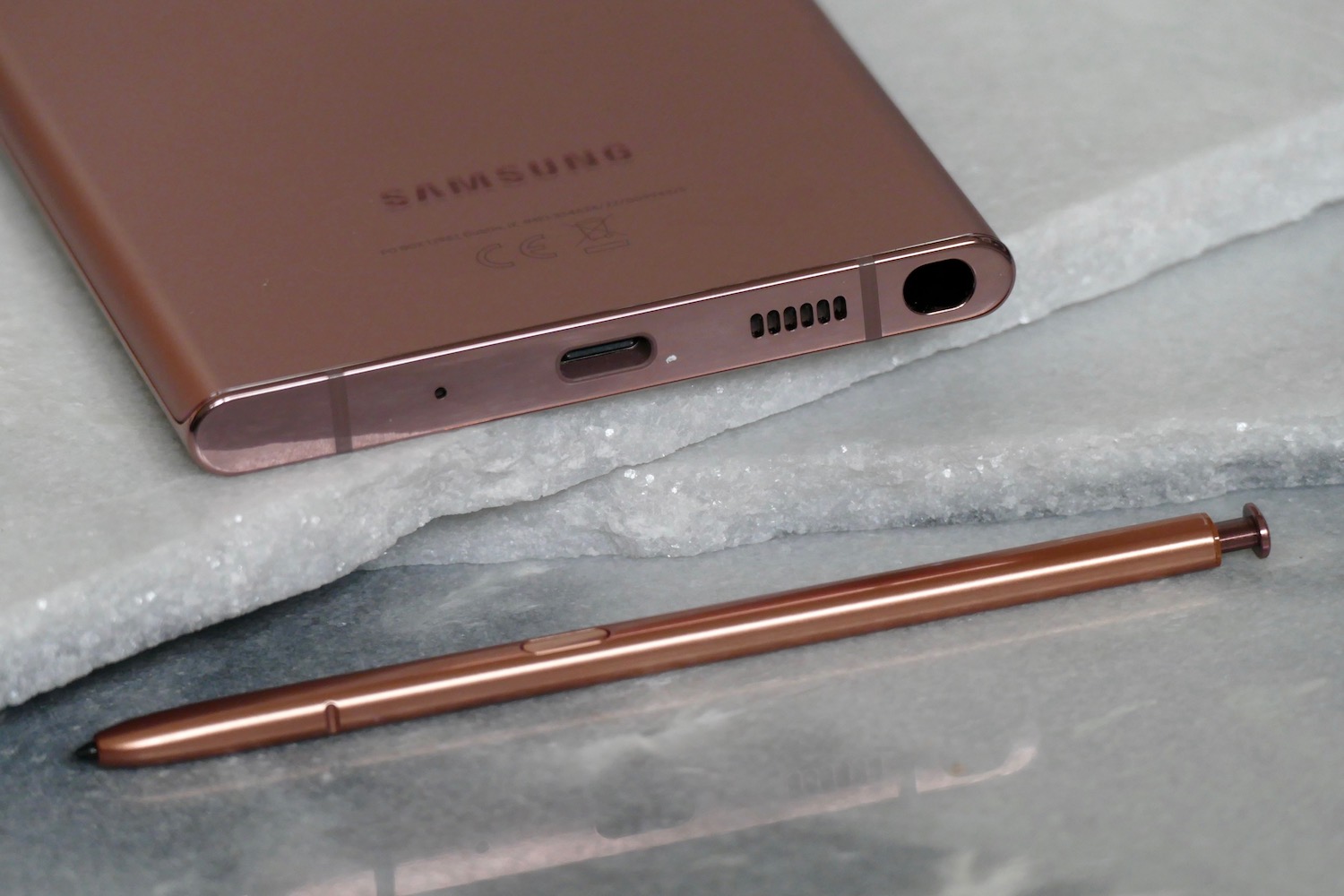
The Note 20 Ultra’s 4,500mAh battery has a lot to cope with, so don’t expect it to last longer than a day if your screen time is five hours or more. Use it moderately for less time and it will just about creep through a second working day. During my time with the phone, it has not lasted two full days on a single charge, and with an average of three to four hours screen time each day, it’s at around 30% by midnight.
Considering the tech the battery has to power, I don’t consider this too bad, and the phone hasn’t left me concerned I’ll need an emergency top-up to last the day. However, it’s not going to please the hardcore power-users Samsung wants to attract with the Note series, and if you’re going to use 5G, expect even more battery drain. I don’t have 5G in my local area, so have I not tested this feature. The 4G LTE signals are good, and Wi-Fi calling on supported networks is helpful, although I did find Wi-Fi range was a little short. The 25-watt wired charger takes the battery to 50% in 30 minutes, and you can use wireless charging too.
An in-display fingerprint sensor secures the Note 20 Ultra and, unfortunately, it’s as finicky as the one on the Note 10 Plus and the Galaxy S20 Ultra. It’s not as fast to recognize your print as the OnePlus 8 Pro, or as quick to unlock the phone. There is a face unlock system, but it’s similarly ponderous and has an awkward way of activating. As a result, I accidentally turned the screen off and on again while I waited for it to work. Unlocking Samsung phones generally is frustrating compared to almost all other phones I use.
So much more
I’ve been using the Galaxy Note 20 Ultra as my main phone for nearly two weeks, and there are still many features to explore, or that I have not used for any appreciable length of time. This is unusual, and highlights just how much effort Samsung has put into making the Galaxy Note 20 Ultra its most powerful and feature-packed smartphone available.
An example is the new Wireless DeX system. Samsung DeX takes your phone display and puts it on a monitor or television, then changes the software into a desktop-style system where you can run apps, view photos, watch video, and even play games. Previously, DeX required an HDMI cable or special dock to operate, but the Note 20 Ultra introduces wireless support. The feature likely works best with Samsung televisions, but refused to link with Screen Mirroring on my Sony Android TV.
The list goes on. The Galaxy Note 20 Ultra has a power-sharing mode to wirelessly charge the Galaxy Watch 3, Galaxy Buds Plus, or the Galaxy Buds Live, it provides access to Microsoft’s Xbox Game Pass to stream console games onto your phone, and later this year a software update will add the ability to run your phone apps on a Windows 10 PC. Right now, Samsung Notes sync with OneNote. There really is a ton to discover on the Galaxy Note 20 Ultra, and that helps increase the longevity.
Price and availability
The 128GB Galaxy Note 20 Ultra costs $1,299, or $1,449 for the 512GB model. In the U.K. the 128GB phone is 1,179 British pounds and the 512GB phone is 1,279 pounds. It’s sold through Samsung’s own online store and on contract with the vast majority of carriers. It’s available to purchase now.
However, if you’re not yet ready to dish out that big cash, you can still get your hand on a quality Galaxy or smartphone through our best Samsung Galaxy deals and best smartphone deals list.
Our take
The Galaxy Note 20 Ultra is the biggest, baddest, most hardcore flagship smartphone you can buy today. It has everything you could want from a phone today — and pretty much everything for tomorrow too, including 5G, making it a safe purchase for someone who wants a phone that will last for years.
A word on the price. It’s expensive, but when you consider how powerful and capable it is, and how many features it offers, there’s more longevity in the Note 20 Ultra than many other flagship phones that cost a few hundred dollars less. Samsung says it designed it this way, and it shows. Buy it, and you may even begin to consider changing your phone for several years.
Is there a better alternative?
If you want the best technical specifications, a stylus, and a brilliant camera, the Galaxy Note 20 Ultra stands alone. If you aren’t that worried about the S Pen stylus, the Galaxy S20 Ultra is a decent alternative, although I prefer the Note 20 Ultra’s design and camera. We also have a comparison between Galaxy Note 20 Ultra and Galaxy S20 Ultra to help you decide which to go for. At this price, you should also be looking at the Apple iPhone 11 Pro Max, which has a standout camera and screen.
If you don’t want to spend so much money, and again aren’t worried about the stylus, the OnePlus 8 Pro is a great buy with its pretty design, decent camera, and stunning screen. If you’re really keen on gaming ,the Asus ROG Phone 3 is another high-spec, focused phone that’s worth considering.
Should you upgrade if you have the Galaxy Note 10 Plus? I don’t think so. The camera is a definite improvement, but with it comes additional bulk. If you want a Note phone but not at the Note 20 Ultra’s price, shopping around for a Note 10 Plus would be a shrewd move.
How long will it last?
Ages and ages. The Note 20 Ultra’s power and ability mean that even in two years time, it should still feel fresh. It has an IP68 water-resistance rating, but isn’t rugged, so you’ll still want to put it in a case. There’s 5G for the future too, and you can record 8K video ready for when you buy an 8K TV.
Samsung promises three generations of software updates for its most recent smartphones. This means the Galaxy Note 20 Ultra should receive Android updates beyond a two-year contract, extending its useful life further than most will expect. However, Samsung has not committed to any time frames, so although Android 11 and beyond will arrive on the phone, you may have to be patient.
Should you buy it?
Yes. You’ll be spending a lot, but you’ll be getting a phone you won’t have to think about replacing for years.




